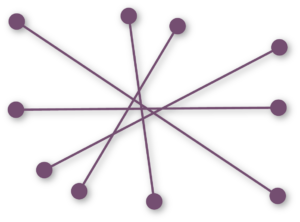SITE TECHNOLOGY
Does the Technology Support the Site Culture?
What is the culture you want technology to support? Contact center culture reflects the site manager’s values and priorities as well as the personality of the site.
Generations X and Y are changing the way work is done and they are using technology to change it. The omni-channel trends, the move to the cloud, and social media are here to stay. The consolidation of technology companies especially CRMs, workforce management, routing and queuing technology will make it easier for contact centers to provide the technology tools agents need to service the 21st century customer. CTI’s, agent scripts and surveys are just some of the contact center platform tools that automate the agent’s job making it easier. Contact center features, capability and technology trends impact the contact center culture. The question is, are you aware of how it is impacted? Are you using technology that supports the culture? Or is the technology so outdated that it is destroying the culture? Are you creating a culture of ease or frustration?
The Paperless Office
Since the 1980’s business has been pushing for the paperless office. It is now the new normal.
Contact centers that are HIPPA and PCI compliant have “no paper” policies. Their agents are not allowed to write customer names down, no account numbers, nor any notes – absolutely nothing. This paperless policy can create stress for new agents who have the need to write things down. To write is the kinesthetic approach and is a cultural shift to use the computer’s “notepad” instead of paper and pen. This paperless environment forces agents to type into a virtual notepad and is a shift in thinking as well as behavior. Different age demographics will typically see technology differently, as some will be very comfortable with it while others may become easily overwhelmed with multiple screens open and if they are small, will get frustrated when they get covered up by one another. Help agents make the transition. Paperless is here to stay and everyone wants to save trees and be PCI and HIPPA compliant.

How Technology Influences Company Culture
First, agents today can be overwhelmed with the amount of technology they are responsible for knowing how to use.
Dual monitors, keyboards, a mouse, a soft phone, and multiple applications can make an agent want to give up in despair. This “overwhelmed employee” is a real phenomenon. Computers, tablets, and contact center phone systems have all become standard equipment in today’s contact centers and are indeed part of the culture.
In omni-channel centers, some agents are assigned to one channel while at other sites, agents are responsible for all channels. The trend is that consumers are communicating in more than one channel and will continue to do so in the future. The challenge is to provide a consistent experience across all channels. Agents are learning how to communicate via all channels and this can be overwhelming; not all contact center platforms can handle omni-channel communications, thus putting more on the agent.
In PCI and HIPPA compliant contact centers, personal devices are typically locked up and put away. Agents are learning how to conduct themselves and are looking for cues from management as to how and when personal calls can be answered, how they should handle social media interruptions and personal use of the company phone system. Agents are looking for what are acceptable technology practices for both personal and company technology.
Camaraderie and Coaching
Contact Centers today have instant messaging built into the contact center platform allowing supervisors and team members to talk and share throughout the day.
Team chats include helping each other out, cheering and celebrating agent successes and of course any announcements from the team manager. No longer do agents feel isolated. This creates team camaraderie where prior to this technology agents spent the day alone.
Many contact center platforms have features that can support the agent in several different ways. For example, if an agent needs help, the supervisor can listen to the call in “silent” mode and chat with the agent via a chat box to assist, like where to find information or what questions to ask. This feature can be used no matter where the agent and supervisor reside within the world. If the agent is struggling, the supervisor can “barge in” and turn the call into a three way call and support the new agents. This kind of support helps reduce turnover; agents that feel supported stick around. A supportive environment creates a winning culture.
INDUSTRY SERVICE TIPS
1. Conversation gets convoluted with Instant Messenger, email and chat. Get out of your chair; pick up the phone and talk to people.
2. While everyone likes wireless it’s not the most reliable for contact centers. Wireless laptop connections drop calls with soft phones. Stick to wired.
NEXT STEPS
Culture can make or break an agent’s job experience and a customer’s experience. It can be the deciding factor in accepting a job and keeping that job. As Generations Y and Z outnumber the Baby Boomers technology will continue to drive and change the way contact centers operate today. Today’s technology allows agents to work from home with greater flexibility. Agents just login to a call queue and start taking calls; with SaaS contact center platforms, this gives the agents the ability to do so from anywhere around the world. The trend is to work from anywhere at anytime. While the technology allows agents to do this, the contact center culture will shift in how it is typically managed.
Sound Masking, Critical Component of Acoustic Design
Industry Content Supporter:
Julie Solomon
Chief Marketing Officer
https://www.linkedin.com/in/juliesolomon
Sound Masking is a Critical Component of Acoustic Design
When designing an optimal acoustic environment, architects consider a variety of elements to address noise control and speech privacy. Elements added either Absorb, Block, or Cover sound, and are collectively called the ABC’s of acoustic design.
Absorb: Acoustic wall panels, carpet, and ceiling tiles help absorb excess sound
Block: Solid barriers, partitions, and walls help block excess sound
Cover: Sound masking helps cover up excess sound
All of the ABC’s of acoustic design can be used together or individually to achieve the desired acoustic environment, but absorbing and blocking materials are costly and underused. Sound masking, on the other hand, is a low-cost option for creating acoustical environments that both reduce noise distractions and increase speech privacy.
Open Floor Plans are the New Normal
Most workplaces today feature more open spaces and smaller, and often shared, workstations. Fewer sound blocking and absorptive materials are being used such as lower or non-existent partitions, hard or glass surfaces, and thinner walls and doors. This creates acoustical challenges that negatively impact workplace satisfaction, productivity, and speech privacy.
Distractions Make Your Employees Less Productive
Employees are interrupted once every 11 minutes according to research from UC Irvine, and it takes them up to 23 minutes to get back into the flow of what they were doing before they were interrupted.
A 2014 Steelcase/Ipsos study found that employees lost as much as 86 minutes per day due to noise distractions. Even using conservative estimates, this loss of productivity adds up to big monetary losses for companies. 21.5 minutes daily is roughly 4% of an average employee’s work day (based on an 8-hour day). Some quick math shows that a company with 100 employees and an average employee salary cost of $50,000 is losing $200,000 a year in lost productivity.
Sound Masking Helps Your Employees Concentrate and Work More Efficiently
Sound Masking is the process of adding to an environment a low level of unobtrusive background sound engineered to protect confidentiality and reduce distractions by reducing the intelligibility of speech, thus making the acoustical environment more comfortable. Adding sound to a space actually makes the space seem quieter. It sounds counter-intuitive, but it’s true. This is because the added sound reduces the intelligibility of speech. When you can’t understand what someone is saying, their words are less distracting — in fact, you probably don’t even notice them.
Here’s an example of sound masking in everyday life. Have you ever had a conversation with someone while you are washing dishes and they are on the other side of the kitchen? When the water isn’t running, you can hear the other person’s words perfectly. When you turn the water on it becomes much harder to hear them and understand what they are saying. The person isn’t speaking more softly, but they sound as if they are. This is because the noise of the running water is “masking” the sound of the person speaking to you.
Sound masking mimics this phenomenon on a much more sophisticated and effective scale. By adding ambient sound to an environment, (such as professionally engineered sounds that sound similar to water flowing or airflow) you help mask the other noises in the environment, making them less distracting. Sound masking doesn’t eliminate all noises in an environment; it simply reduces the area where human speech is intelligible and distracting. We call this area the radius of distraction. Once masking is added, it becomes more challenging to understand conversations from across the room, and thus makes it less likely that conversations will distract you. (Cambridge Sound Management – 2017)

VIDEO FROM OUR EXPERTS



INDUSTRY EXPERTS

Company 1

Company 2

Company 3
NETWORKING FOR CONTACT CENTER PROFESSIONALS
ABOUT NACSMA
NACSMA brings together like-minded professionals focused on advancing the customer contact industry and creating career growth.
BEST-IN-CLASS
Management of a best-in-class contact center sites require the continuous review of Agent Sourcing Models, Organizational Training and Management Development Programs.
NACSMA MEMBERSHIP
NACSMA is a professional, non-profit association whose members represent customer contact organizations and the vendors who support them.
IMPLEMENTATION
When a contact center organization expands to an additional site or requires new space, the steps to properly implement are unique to each organization but do have standard phases.
